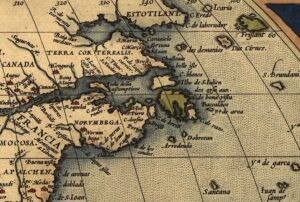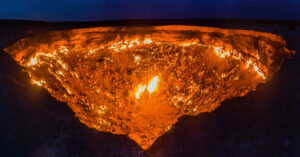Deep in the Atacama Desert, the once bustling mining town of La Noria is now a forgotten remnant of Chile’s industrial era. Dirt blankets the crumbling infrastructure. A derelict cemetery of makeshift crosses, rudimentary tombstones, and open graves are reminders of a time of tough living and high mortality. But in 2003, La Noria made international news when a man found the skeletal remains of something that looked extraterrestrial.
Discovery
Oscar Muñoz found a leather cloth tied with a bright purple ribbon near a decrepit church in La Noria, inside was the body of a little girl who came to be known as Ata. We do know where she came from or how she came to be there. But most importantly, no one knew what she was; Ata did not look human.

Ata is only 15cm long. Photo: Emery Smith/University of California
Ata had an elongated skull and was only 15cm long. Because of her otherworldly appearance, Ata was passed from one private collector to another via the black market. Eventually, she landed in the possession of a Spanish businessman who allowed scientists to examine the body.
When the world caught wind of the story, Ata became the ‘Atacama Alien’. But despite Ata’s uncanny resemblance to Sci-fi’s little green men, she was no alien.
Analysis
Fortunately for researchers, Ata’s DNA was easy to extract because the extreme conditions of the Atacama had preserved the remains. They found that Ata was a highly deformed human fetus.
A study run by Sanchita Bhattacharaya and his colleagues at the University of California San Francisco and Stanford found that Ata likely suffered from severe genetic mutations. These mutations resulted in dwarfism, extreme bone aging, and birth defects like congenital diaphragmatic hernia, turricephaly, or oxycephaly. The team also found traces of other bone disorders like scoliosis and Ehlers-Danlos syndrome.

Ata. Photo: The Times
The team used a series of tests to determine these defects. These included extracting 1mm of bone and running it through skeletal radiography, computed tomography, and whole-genome sequencing. The researchers had never seen so many abnormalities in one subject.
The team also discovered that Ata was not as ancient as initially believed, she could have been born 40 or 50 years ago. The exceptionally dry climate of the Atacama means that “bodies interred in the soil there quite regularly become spontaneously mummified.” From the DNA sample extracted, scientists determined that she has a mix of South American, European, and South Asian ancestry.
Not the only one
There was a similar case in Russia in the 1990s. The Kyshtym Dwarf was another female human fetus, that became known by the name Alyoshenka. She died prematurely at around 25 weeks and was supposedly found by an old woman in a village near Kyshtym.
In 1957, Kyshtym experienced a devastating nuclear accident. Over 270,000 people were exposed to dangerous levels of radioactivity. This probably resulted in Alyoshenka’s underdevelopment and mutations. Unfortunately, the body disappeared and we are left with rumors and speculation.
Controversy
Ata’s unique story does not come without controversy. A follow-up study suggested that Bhattacharaya’s research was unethical. Chile has strict laws for archaeological finds and forensic research. Archaeologists must receive permission from the appropriate authorities and did not receive these permits in 2003.
The follow-up study also suggested that Ata might not have suffered from genetic abnormalities at all. Instead, they believe her appearance could be the result of trauma from her birth or burial.
Conclusion
Some people believe Ata may have been a victim of the industrial town’s harsh environment. A combination of extreme temperatures, no regulation of working conditions, and poor facilities could have affected her development while in the womb. Additionally, Bhattacharaya stated that the town’s specialization in mining nitrates “suggests a possible role for prenatal nitrate exposure leading to DNA damage.”
Despite making international news, no one has come forward to claim the child, so we may never know Ata’s full story. Nevertheless, Ata could still provide much-needed insight into genetic and anatomical anomalies.






